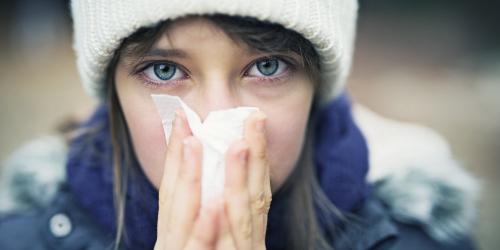According to WHO (World Health Organization), "tobacco products are products wholly or partly made from tobacco leaves and intended to be smoked, sucked, chewed or prized. They all contain nicotine, a psychotropic agent that is highly addictive.
The term "smoking" refers to the action of smoking. There is no threshold under which smoking would be safe, the latter is, as recalls the website Tobacco Info Service , the first cause of preventable death in France.
Despite the many information campaigns on the dangers of smoking, smokers are still very much around the world. However, the figures shared by WHO are staggering: tobacco kills half of those who consume more than 7 million people each year (including 890,000 non-smokers involuntarily exposed to smoke) and represents a death of adult in two .
Tobacco: how do you become dependent?
There are three types of smoking addiction.
- The first is the physical dependence due to nicotine. When the smoker does not receive a dose of nicotine, he feels a sensation of lack, which is reflected in several signs: strong urge to smoke, irritability, nervousness, restlessness, anxiety, disturbed sleep , depressed mood, impaired concentration, increased appetite and even constipation. These signs - unpleasant - often lead to the failure of smoking cessation.
- The second form of addiction is a psychological addiction, because the cigarette is a means of pleasure, of managing stress , to overcome one's anxieties or emotions, to concentrate. This is related to the psychoactive effects of nicotine which provides relaxation, intellectual stimulation, anxiolytic action, antidepressive and appetite suppressant. These pleasant nicotine effects can - unfortunately - appear very quickly after the first cigarettes, which increases the phenomenon of dependence.
- Finally, there is also an environmental or behavioral dependence, which depends on social and friendly pressure. Indeed, we often associate smoking with a moment, a circumstance, places or people that make us want to smoke.
What are the risks of smoking?
The WHO recalls that smoking is one of the leading causes of death, disease and impoverishment in the world. In France, according to Tobacco Info Service, smoking is responsible for 73,000 deaths a year: one in two regular smokers dies prematurely of the causes of their smoking. One in three cancers can be attributed to smoking.
Smoking-related cancers include lung cancer (90% of lung cancer cases are linked to smoking and 5% to passive smoking), as well as cancers of the throat , mouth, lips, lungs and lungs. pancreas, kidneys, bladder, uterus or esophagus when tobacco is associated with alcohol.
Tobacco is also the cause of cardiovascular disease . The risks of myocardial infarction are accentuated, as are the strokes , the arteritis of the lower limbs, the aneurysms , the arterial hypertension.
Smoking also leads to other types of diseases, such as chronic bronchitis , which may progress to respiratory failure; emphysema (excessive and permanent dilation of the pulmonary alveoli, whose partitions are broken).
Smoking can also be attributed to pathologies such as gastritis, ulcers, type II diabetes , hypercholesterolemia , skin diseases such as eczema , psoriasis , lupus . Not to mention ENT and dental infections, cataracts or age-related macular degeneration (AMD).
Side effects of smoking
In addition to these diseases, smoking also leads to undesirable side effects: decreased sexual ability and fertility, skin damage, premature appearance of wrinkles , yellowing teeth, bad breath , taste buds, oral and nasal mucous membranes, organs vocal and salivary glands are altered.
Tobacco also causes deficiencies in vitamin B and C and degrades the cerebral arteries, so vision, hearing or memory ...
And passive smoking?
Most disturbing in smoking is that it's not just smokers who are in danger, passive smokers are also at risk from smoking.
According to the WHO, "passive smoking" refers to exposure to smoke from tobacco products such as cigarettes, bidi or narghile in enclosed areas such as a restaurant or office. As the health authority recalls, tobacco smoke contains more than 4,000 chemicals, of which at least 250 are known to be harmful and 50 are carcinogenic.
The consequences of passive smoking are almost the same as for smokers: severe cardiovascular and respiratory diseases, including coronary heart disease and lung cancer. Passive smoking is also a cause of sudden infant death and low birth weight.
How to quit smoking ?
Stopping smoking would improve one's health and prolong one's life expectancy, but it's often difficult. Indeed, nicotine addiction makes smoking cumbersome: irritability, fatigue , mood swings, increased appetite ... So many side effects that undermine the will of smokers who want to leave cigarette.
It is precisely because the dependence is real that aids to weaning and many accompaniments are set up, you find the way that will suit you best. All our smoking related articles are gathered in this special issue.


